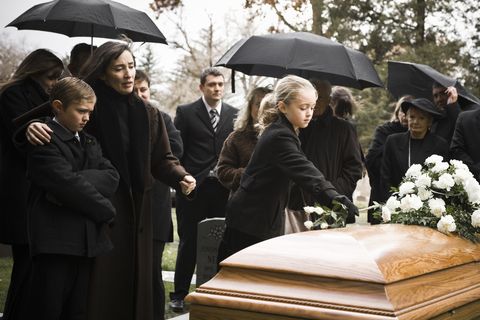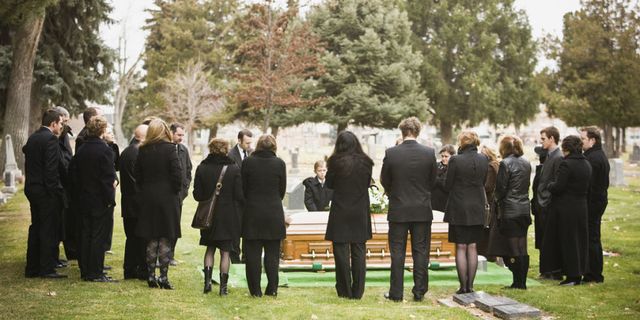Unlike some more traditional, religious types of funerals, there is no one standard method for conducting a modern funeral.
The primary types of funerals are burials and cremations, and it is up to the family to decide which one they want. Although most types of funerals involve a graveside service, some choose to have only a cremation service.
Because so many people prefer burial or cremation, most burials are conducted at funeral homes that have the facilities needed. While a decedent’s family may not be attending a funeral, it is still possible for them to arrange for funeral services to take place at another location. The deceased’s family and friends may not be present at a direct funeral or cremation, but they can still organise a funeral service elsewhere.
Direct burial or committal is the cheaper version of the traditional funeral offered at most funeral homes across the country, and is one of the most cost-effective funeral arrangements available. Traditional funerals are those in which a direct burial is performed with no viewing/visitation and no funeral service. Traditional funeral services usually involve a viewing prior to the ceremony; this may be scheduled either directly prior to the ceremony or the days leading up to it.
Having a viewing or visitation is a significant component of traditional funerals, because it gives immediate friends and family a chance to come together unofficially, to express condolences, and share memories. A visitation or viewing is an opportunity for close friends and family to come together and spend time with one another and the person who has died before the funeral ceremony. A viewing or visitation is a place for attendees to see the body and offer their condolences to the grieving family.
A viewing service is held for those choosing an open-casket funeral, whereas a visitation is held for those choosing a closed-casket funeral or cremation. A memorial service may take place anytime before or after the funeral or cremation, but is usually held immediately following the funeral. In most cases, a viewing is often held which may be held immediately prior to the funeral service or several days prior.
Although bodies are typically cremated following a funeral ceremony, the cremation process may also be made a part of a funeral ceremony, or an entirely separate celebration. You have the option to have a cremation following a funeral service, or a direct cremation with no funeral ceremony. A funeral with no services is when a funeral home performs the cremation and returns the ashes to your loved one.
A funeral service may also involve something known as the Scattering the Ashes Ceremony. A burial ceremony gives loved ones an opportunity to celebrate their loved ones life and show how much they love and respect the individual. A traditional funeral usually involves a formal ceremony led by a clergyman or celebrant.

Funerals are ceremonies used to commemorate, honour, and sanctify a deceased person. Known as a Humanist funeral, contemporary ones function as celebrations of a deceased person’s life, with no religious elements. Humanist funerals are geared more towards celebrating an individual’s life than the religious aspects, such as Bible readings, sermons, and other traditional rituals.
The burial ceremony — also known as inaugural ceremony — is a portion of the ceremony which follows a complete or traditional funeral ceremony, explained above; however, some families prefer to participate only in the burial procedure, skipping church services. One of the biggest differences between a memorial service and a full, graveside, or visiting-service funeral is that the decedent’s body does not necessarily need to be present during the ceremony – though it can if the family chooses. Cremation may be an excellent choice for people who want to participate in scattered ashes services, or keep a loved one in a ceremony urn; it is also the most affordable funeral type.
There are a variety of types of funerals that can be held: ranging from the formal affairs held at the chapel, to more informal memorial services held in public parks or on beaches. While it may be stressful thinking about planning an event for someone you have just lost, holding a funeral service remains the best way to honour their memory. It is important to talk with several funeral directors and find a funeral option that best meets the cultural and religious needs of your family.
If your funeral director does not have their chapel at their funeral home, or you wish to have the viewing at a different venue, additional fees may apply to transporting the body to and from an outside venue. Some fees are non-optional, such as professional fees for time spent with the funeral director, costs for the death certificate and other legal documents, and fees charged by the crematorium or funeral grounds used. Some funeral homes will not charge additional fees to host a viewing or viewing, since this option is built into the professional services charge, however, many will charge hourly fees to use their chapels, facilities, and rooms set up.
The services may include the casket, flowers, cremation or burial, or transportation costs for relatives living a distance.
While every family is free to choose its own service order, you will usually see Australian funeral services follow this order. Home funerals Australia are dependent upon a particular individual’s religious beliefs, personal wishes, and family plans.



